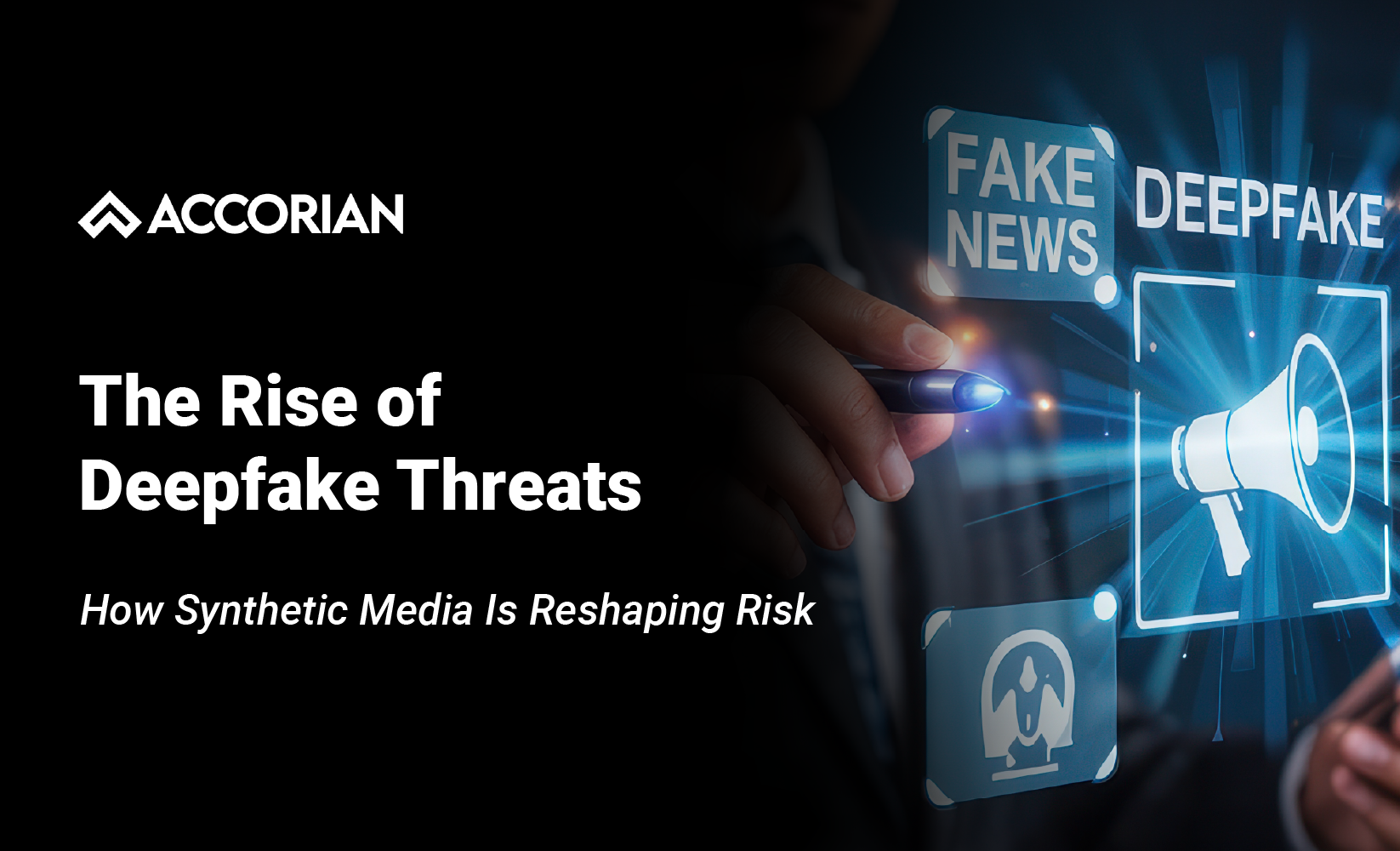A New Era of Digital Deception
In the age of AI-driven innovation, synthetic media, particularly deepfakes, has emerged as one of the most disruptive forces in cybersecurity. What began as a novelty in entertainment has rapidly evolved into a potent tool for cybercriminals, capable of bypassing traditional defenses and manipulating trust on a large scale. As deepfake technology becomes more accessible and convincing, organizations across sectors are facing a new category of risk: one that targets not just systems, but perception itself.
What Are Deepfakes?
Deepfakes are synthetic audio, video, or image files generated using advanced machine learning techniques, primarily Generative Adversarial Networks (GANs). These models can convincingly replicate a person’s voice, face, or behavior, making it increasingly difficult to distinguish real from fake.
Once confined to Hollywood studios, deepfake creation is now democratized. Open-source tools and AI-as-a-service platforms allow even non-technical users to generate realistic impersonations with minimal input.
Deepfake Threats in 2025: A Growing Concern
According to the India Cyber Threat Report 2025 by the Data Security Council of India (DSCI) and Seqrite, deepfake-enabled cyberattacks are expected to surge across industries, with healthcare, finance, and energy among the most vulnerable. The report highlights several alarming trends:
- AI-powered phishing campaigns using deepfake audio and video to impersonate executives and trick employees into transferring funds or revealing credentials.
- Voice cloning attacks targeting finance departments with fake “CEO” calls authorizing wire transfers.
- Synthetic identity fraud is disrupting KYC processes in banks and telecoms.
- Market manipulation and political disinformation through fabricated videos and statements.
The World Economic Forum’s Global Cybersecurity Outlook 2025 further underscores the urgency: cyberattacks have more than doubled since 2021, and deepfakes are now central to social engineering and misinformation campaigns.
Why Deepfakes Are So Dangerous?
Precision Targeting – Deepfakes enable attackers to personalize scams with uncanny accuracy, mimicking internal voices, facial expressions, and even behavioral patterns.
Psychological Manipulation- Unlike traditional malware, deepfakes exploit human trust. A convincing video or voice message from a known authority figure can override skepticism and trigger immediate action.
Business Impact
- Financial Losses: Millions lost to fraudulent fund transfers and fake negotiations.
- Reputational Damage: Viral fake content can erode brand trust and investor confidence.
- Operational Disruption: Deepfake-driven misinformation can paralyze decision-making and crisis response.
The Regulatory Lag
Despite the growing threat, governance frameworks are struggling to keep pace. Most organizations lack formal policies for detecting or responding to deepfake incidents. Fragmented regulations across jurisdictions further complicate enforcement and accountability.
Building Resilience: What Organizations Must Do
Invest in Deepfake Detection Tools- AI-powered detection systems can analyze facial movements, voice patterns, and metadata to flag synthetic content.
Train Employees to Recognize Manipulation- Security awareness programs must evolve to include deepfake scenarios, especially for finance, HR, and executive teams.
Strengthen Identity Verification- Multi-factor authentication, biometric validation, and secure communication protocols can reduce susceptibility to impersonation.
Establish Incident Response Protocols- Organizations should treat deepfake incidents as high-priority threats, with clear escalation paths and forensic capabilities.
How Accorian Helps Organizations Stay Ahead
At Accorian, we understand that cybersecurity is no longer just about firewalls and endpoints; it’s about trust, perception, and proactive defense. As deepfake threats rise, our services are designed to help organizations build resilience from the inside out:
- AI Threat Modeling: We assess how synthetic media could be weaponized against your business and design countermeasures.
- Security Awareness Programs: Our tailored training modules include deepfake recognition and response strategies.
- Incident Response Planning: We help you build playbooks for synthetic media attacks, ensuring rapid containment and recovery.
- Governance & Compliance Advisory: Accorian aligns your policies with emerging regulations and industry best practices.
Whether you’re in healthcare, fintech, or AI-driven innovation, Accorian equips you to navigate the evolving threat landscape with confidence.
Final Thought: Deepfakes Are Here. Are You Ready?
Synthetic media is reshaping risk in ways that challenge traditional cybersecurity paradigms.
The question is no longer if your organization will encounter a deepfake, but when.
Those who prepare now will lead with trust, agility, and resilience.
Partner with Accorian to stay ahead of deception and ahead of the curve.
Sources:
India Cyber Threat Report 2025 DSCI & Seqrite
Threat Virus – Deepfake Cyber Attacks 2025
World Economic Forum – Cybersecurity Outlook 2025



